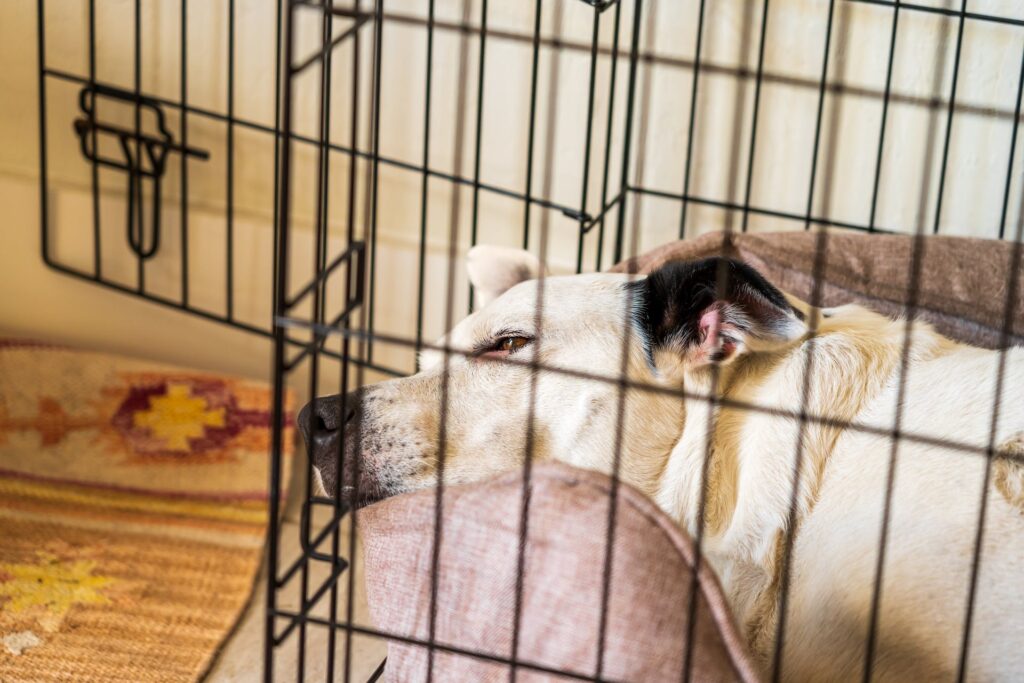Introducing your new puppy to crate training is an effective way to establish household rules, including housebreaking and appropriate behavior. Most people would disagree and say “Dogs are naturally unsuited to confinement in cages and should not be kept or enclosed in such spaces”. While I agree, a crate serves as a safe haven for your puppy, functioning as a cozy spot for naps or a retreat from household activities. It’s a crucial method to ensure their safety and security in your absence.
Although crate training might seem daunting for new pet owners, approaching it with patience and positive reinforcement can turn it into a smooth and gratifying experience. The decision to crate train depends on your puppy’s needs and your preferences. Ensure proper cage training by considering these tips:
Gradually Introduce your Puppy to the Crate
Make the crate appealing with comfy bedding, toys, and treats. Let your puppy explore at their own pace, rewarding them for voluntary crate time.
Use the Door Removal Technique
Initially, remove the crate door and place food or toys inside, allowing your puppy to move in and out freely. Make it a pleasant experience.
Establish a Crate Schedule
Take your puppy outside before crate time and immediately afterward due to their small bladders. Consistent bathroom breaks are crucial.
Create a Safe Space For Your Puppy
The crate should provide a secure and comfortable space, preventing accidents when unsupervised. Size it appropriately for comfort and safety.
Use Positive Reinforcement
Reinforce good crate behavior by petting, offering playtime, and positive experiences. Foster a positive association with the crate by making it a cozy den rather than a punishment.
Gradually Extend the Crate Time
Gradually increase the time your puppy spends in the closed crate. Reward good behavior with praise and treats to encourage your puppy to stay longer in the crate.
Potty Train Your Puppy
Establish a designated area for your puppy’s bathroom needs, taking them there regularly. Employ positive reinforcement and rewards for using the correct spot to foster good behavior and adherence to house rules.
Introduce Varying Sounds, Textures, and Scents
Boost your puppy’s comfort in new environments by exposing it to a range of sounds, textures, and smells. Begin with the familiar and progressively introduce new stimuli.
Train Fundamental Agility and Tricks
Instilling basic agility and tricks in your puppy enhances confidence and deepens your connection. Commence with fundamental commands like sit, stay, come, and down, before advancing to more intricate activities like fetch and jumping.
Gradual Freedom
Once housetrained, gradually allow more freedom in a puppy-proofed area, always supervising until you’re confident in their behavior.
Be Consistent and Patient
Successful crate training requires time and patience. Avoid rushing and use a gentle, consistent approach.
Remember, each puppy is unique, so adapt your training to their individual needs. When crate training prioritize a loving, safe environment for your puppy’s growth and learning.
